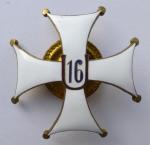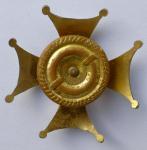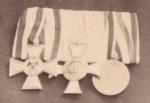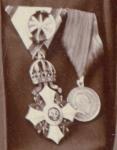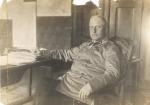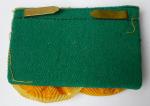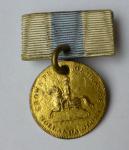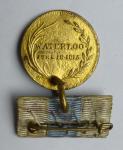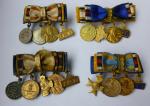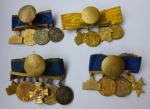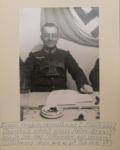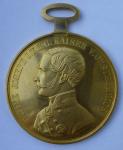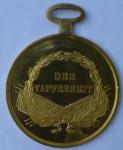-
Posts
238 -
Joined
-
Last visited
-
Days Won
6
Content Type
Profiles
Forums
Blogs
Gallery
Events
Store
Everything posted by saxcob
-

Unidentified A Russian or Polish Award?
saxcob replied to saxcob's topic in Central & Eastern European States
Thank you for the quick response, Uwe! -

Unidentified A Russian or Polish Award?
saxcob replied to saxcob's topic in Central & Eastern European States
-
-

Netherlands A Dutch Medal Bar - What is missing?
saxcob replied to saxcob's topic in Northern European & Baltic States
Thanks for your help, guys! I have to admit that I am really surprised about the green color fading so completely. There is not the slightest trace of it in any corner! -
General Hahndorff served the final two years of the Great War as Deputy Chief of General Staff to Field Marshal von Hindenburg. Hahndorff had previously been a division-level commander on both the Eastern and Western Front. The text/dedication on the back reads: Hahndorff Generalleutnant General- Quartiermeister Gn. H. Qu. Sep. 17
-
-

Luftwaffe RK 'ubergroesse'?
saxcob replied to Jock Auld's topic in Germany: Third Reich: Research, Documentation & Photographs
Kris: Yes, no problem. Jock: No idea. However, it might have something to do with memories which came up during christmas night... -

Luftwaffe RK 'ubergroesse'?
saxcob replied to Jock Auld's topic in Germany: Third Reich: Research, Documentation & Photographs
Please find attached a similiar case but with a KVK instead of a RK. However, as the text tells us it is not as funny as your example: Captain Otto Brauer (02.07.1893-25.12.1942) never wore the original as he shot himself in the very same (christmas) night. -

Imperial Russia Russian Badge Silver 1898 (Navy?)
saxcob replied to saxcob's topic in Russia: Imperial
I found him. It is Alexander Edvard Tillander (St. Petersburg 1855-1918). http://www.925-1000.com/Frussia_makers_A.html -

Imperial Russia Russian Badge Silver 1898 (Navy?)
saxcob replied to saxcob's topic in Russia: Imperial
A connection with the 1898 art-craft and handicraft exhibition in St. Petersburg would make sense as there are many tools to be seen on the badge which do not seem to be masonic in that combination. Why would they use latin letters? -

Imperial Russia Russian Badge Silver 1898 (Navy?)
saxcob replied to saxcob's topic in Russia: Imperial
Thank you! So it is probably not a military item at all. "AT" seems to be unknown; maybe it is "AP"?: http://www.silvercollection.it/bisrussiansilverhallmarks.html -
The top shield under the Tsar’s crown seems to show two anchors. On the back there are silver and maker's marks (which?). Though it seems to be Russian there are Latin letters on it. Who can help? Thanks in advance!
-

Heer Tailor labels: Let's make a reference list here.
saxcob replied to azyeoman's topic in Wehrmacht Medals, Decorations & Awards
. -
Please find attached images of a gold medal for bravery mounted on a cardboard. The text on the cardboard reads: "Gefallen als Held am 11.9.1915 bei Debelo - Osoje Serbien Fähnr. Möhwald Hugo" "Died a hero on 09/11/1915 (from 1914) at Debelo - Osoje Serbia Ensign Möhwald Hugo " The coin weighs 28,05g and is in absolutely uncirculated condition. Judging from the outer appearance it indeed seems to be made of gold. These circumstances raise quite some questions: 1. Were these medals awarded posthumously? 2. How can it be that the 1859-1866 model (portrait of Franz Joseph I, looking to the left, with a small beard) was used almost 50 years later? 3. Would it be possible that it is not the piece actually awarded but bought by the grieving parents? 4. Is anything known about the ensign Hugo Möhwald? The piece is from an old collection. Thanks in advance for your help!
-
The duke was indeed desperate to scratch the young men out of every corner of his territory in order to demonstrate that he was now true to the allies. He was probaly right to think that the Prussians would take revenge for the nassovian occupation and annex his duchy which only had been created in 1806 by the grace of Napoleon. The sacrifice of his soldiers let Nassau survive another 50 years.



